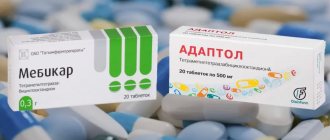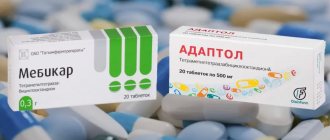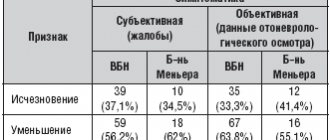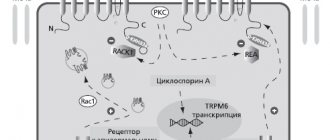Neuroprotectors have been used in the treatment of stage glaucoma not so long ago. At the same time, the drugs protect the retina and optic nerve. This type of therapy is aimed at correcting metabolic disorders, improving microcirculation, tissue nutrition, normalizing the rheological properties of blood, and establishing basal and lateral circulation.
It should be noted that this technique is effective only when the level of intraocular pressure is reduced through drug therapy, laser and surgical treatment.
Classification
There are four degrees of changes in nerve fibers in glaucoma:
- Irretrievably lost;
- Acute phase of degeneration;
- Dystrophic changes;
- Preserved structure.
Neuroprotectors are divided into two groups:
- Direct directly protect the neurons and fibers of the retina and optic nerve, respectively.
- Indirect neuroprotectors increase the body's resistance to a decrease in reperfusion pressure.
The selection of specific antiglaucoma therapy requires the doctor to systematically examine the patient. It is carried out on the basis of hemodynamic disorders and metabolic changes. The effectiveness of treatment should be monitored every six months. Below are the main groups of neuroprotectors.
Calcium channel blockers
Drugs in this group increase cell resistance to ischemic effects and also dilate blood vessels. The most commonly used is betaxolol. This medicine reduces vascular resistance and increases neuronal stability. Due to good permeability, the active substance quickly penetrates the structures of the eye and acts on the receptors already in the first hour after instillation.
To reduce the level of pressure inside the eye, betaxolol is instilled twice a day, but sometimes the frequency is increased to 3-4 times.
The use of this medication is contraindicated in patients with cardiac dysfunction and rhythm, corneal dystrophy, and hypersensitivity. Patients with diabetes mellitus, thyrotoxicosis, muscle weakness, and Raynaud's syndrome should be careful. The same applies to pregnant women. Before planned general anesthesia, it is advisable to discontinue the drug.
During therapy, it is necessary to monitor the condition of the eyes (production of tear fluid, integrity of the epithelium) at least once every six months.
When betaxolol is used topically, the development of systemic side effects is unlikely.
Preparations that contain betaxolol as an active ingredient:
- Betoptik (0.5% solution);
- Beoptic S (0.25% solution).
The main representatives of nootropic drugs
1. Piracetam (Lucetam, Nootropil) is one of the first drugs in this group. It is produced both separately in the form of tablets, capsules, solutions for parenteral administration, and in combination with other neuroprotective substances. For example, Phezam - a combination with cinarrizin (a drug to improve cerebral circulation), or with orate acid - Oracetam. The duration of treatment is from 6 to 8 weeks.
In adults, start with a dosage of 200 to 800 mg per day in several doses. Most often, if the patient’s health allows, it is administered orally in the form of capsules or tablets. In particularly severe conditions, parenteral administration is possible. When the desired effect is achieved, it is recommended to continue treatment with dosages of 400 to 600 mg per day, and with parenteral administration, over time, switch to oral administration.
In the instructions, the manufacturer warns of possible sleep disturbances if taken late in the evening. It is important to pay attention to the fact that people with chronic renal failure should treat piracetam with caution, because it is excreted only by the kidneys.
Also not very common, but a serious side effect is its antiplatelet effect, which can lead to bleeding in people who have recently undergone surgery, hemorrhagic stroke or patients with stomach ulcers.
Photo: Nootropics allow a person to recover and get back on track.
2. Phenotropil is a drug similar in its effect and mechanism of action to piracetam. Its feature is a more pronounced activating effect at the beginning of use. It does not have forms for parenteral administration and is only available in tablets.
The dosage regimen is selected individually, the average daily dose is 200-300 mg, which must be taken in 2 doses.
3. Hopatenic acid (pantogam, pantocalcin) is recommended as a component of the complex treatment of neuroses, psychopathic conditions with severe agitation. Unlike piracetam and phenotropil, it has a sedative effect and does not increase the risk of another seizure in epilepsy. Available in the form of tablets and syrup for oral administration. The course of treatment is usually from 1 to 3 months, and the average daily dose is from 0.75 to 3 grams.
4. Phenibut - a drug consisting of aminophenylbutyric acid, is used for disorders of the cerebral cortex, as well as for dizziness associated with dysfunction of the vestibular apparatus, anxiety disorders. Has a slight sedative effect.
5. Cinarrizin – refers to drugs that improve blood supply to the brain. It is the drug of choice for chronic cerebral ischemia.
6. Memantine (noogerone, alzeim) is one of the important drugs for the treatment of neurodegenerative diseases, in particular Alzheimer’s disease and dementia of the Alzheimer’s type. The optimal daily dose is 30 mg, but start taking it with a dosage of 5-10 mg and increase it over the course of a month.
Enzyme antioxidants
Superoxide dismutase is one of the body's natural antioxidant protectors. It destroys reactive oxygen species and has an anti-inflammatory effect. Due to this, the development of degradation in the structures of the trabecular meshwork and optic nerve fibers is inhibited.
Already 1-2 hours after instillation, the maximum concentration of the drug in the tissues of the eye is determined. It penetrates the choroid and retina, accumulating in them.
The drug is prescribed 5-6 times a day. Sometimes they use the method of forced instillation, when the drug is instilled every 10 minutes for an hour. The course of treatment is 2 months.
Drugs produced by various manufacturers:
- Erisod. It is a lyophilized powder (400 thousand and 1.6 million units), from which eye drops are prepared.
- Rexod (800 thousand units).
Two-stage therapy for pain syndrome
Treatment tactics for PS in the back area should be carried out in stages, according to the step-up principle, i.e. increasing the intensity of therapy if treatment is ineffective. Start therapy is carried out with NSAIDs and neurotropic vitamins. If the effectiveness is sufficient, further treatment is based on the step-down principle, i.e. gradual reduction in the intensity of therapy. When symptoms decrease in accordance with the clinical picture, the dosage of NSAIDs is reduced, then NSAIDs are discontinued, and maintenance or preventive therapy with neurotropic vitamins remains.
The injection form of the drug Neuromultivit® (solution for intramuscular injection) allows the use of a two-stage approach in the treatment of PS. At the first stage, an injectable form of the drug Neuromultivit® is prescribed to relieve acute pain, at the second stage - oral therapy to prevent chronicity and recurrence of pain. Scheme of two-stage therapy for prescribing the drug Neuromultivit®: at the initial stage, the drug is administered 1 injection intramuscularly (deeply) of 2 ml daily for 5–10 days, followed by a transition to more rare intramuscular injections 2–3 times a week for 2–3 week; at the second stage, the drug is prescribed orally, 1 tablet 3 times a day for 4 weeks; as symptomatic therapy – 1 tablet 3 times a day for 3 weeks [11].
The most important fact is that the use of the drug Neuromultivit® allows you to reduce the dosage of NSAIDs taken in patients with LBP, and also helps reduce the risk of chronicity and the development of repeated exacerbations of lumbar pain [12].
Non-enzymatic antioxidants
Histochrome can neutralize iron ions, which usually accumulate in the ischemic area. It also neutralizes free radicals, improves energy metabolism and normalizes the rheological properties of blood. The maximum concentration of the drug is reached an hour after administration. Routes of drug administration include subconjunctival and prebulbar. The duration of the course of therapy is 10 injections.
The drug Histochrome is available in the form of a 0.02% solution in ampoules.
Succinic acid has a positive effect on metabolic processes. At the same time, the ionic permeability of the membrane decreases, calcium metabolism is regulated, etc. salts of this acid are components of many dietary supplements (mitomin, yantavit, enerlit).
Succinate-containing heterocyclic compounds (for example, Mexidol) are more promising drugs. This drug forms a buffer redox system. It has a positive effect on energy processes in cells, activates the synthesis of nucleic acids, and enhances glycolysis. Mexidol improves blood flow in the ischemic zone and promotes rapid healing of defects.
Mexidol should not be prescribed for hypersensitivity or in cases of serious liver and kidney diseases. The most common side effects are dyspepsia, dry mouth and allergies.
Mexidol is administered intramuscularly (100 mg) twice a day. The course of therapy is 10-14 days. The drug is available in the form of a 5% solution.
Emoxipine is one of the oldest drugs for the treatment of eye diseases accompanied by ischemia. This substance is a structural analogue of vitamin B6. The drug stabilizes the red blood cell membrane and plays an important role in microcirculation disorders. The maximum concentration is observed after 15-30 minutes, during which the substance accumulates in the retinal cells.
When treating with emoxipine, monitoring of the blood coagulogram is required. Do not mix the medicine in the same syringe with other drugs. The effectiveness of treatment increases if alpha-tocopherol is taken orally at the same time.
Emokipine can be administered by instillation, periocular injection, or as an ocular film. The frequency of instillations is usually 5-6 times per day. The course of treatment lasts 2-4 weeks.
The drug is available in the form of a 1% solution or eye films.
Neuropeptides
Cytomedins are alkaline polypeptides. By acid extraction they are purified from impurities. These substances stimulate cell differentiation processes, affect humoral and cellular immunity, hemostasis, and microcirculation.
Cytomedins, which are obtained from brain and retinal tissues, are involved in the regulation of nervous tissue. Nowadays, cortexin and retinalamin are used in ophthalmology.
Retinalamin is administered intramuscularly, parabulbarly (once a day), Cortexin is administered only intramuscularly. The course of therapy lasts 10 days.
To improve hemodynamics, you can use angioprotectors and antispasmodics.
Classification of nootropic drugs
Among modern drugs for stimulating brain activity, the following classes are distinguished:
- Pyrrolidine derivatives: rolisiracetam, piracetam
- Affecting acetylcholine metabolism: galantamine, neurostigmine, memantine
- Pyridoxine and its analogues: biotedine
- GABA and similar organic acids: aminalone, phenibut, hopatenic acid
- Cerebrovascular agents: preparations based on Ginkgo Biloba
- Drugs that act as or are neuropeptides: noopept
- Activating the system of excitatory neurotransmitters: phenylalanine, glycine Dimercaptobenzimidazone derivatives: bimityl
- Vitamins and products made on their basis: vitamin B5, ubiquinone (Q coenzyme), sulbithiamine
- Polypeptides and organic composites: cerebrolysin, cortexin
- Drugs that have an additional neuroprotective effect, but are not classified as nootropics: drugs to improve blood circulation in the brain (Cavinton, cinarrizine);
- Psychostimulants (sulbutiamine);
- Antihypoxants and antioxidants (Mexidol).
Antispasmodics
Purine and indole alkaloids are used in clinical practice. They increase the concentration of cAMP in the vascular wall and inhibit platelet aggregation.
Theophylline (250 mg three times a day) or xanthinol nicotinate (150 mg three times a day) is usually prescribed.
Indole alkaloids include vinpocetine (taken orally 5 mg three times a day). To increase efficiency, the course can be started with intravenous administration.
Purine alkaloids include chirantyl, trental. They improve the rheological properties of blood when used daily.










